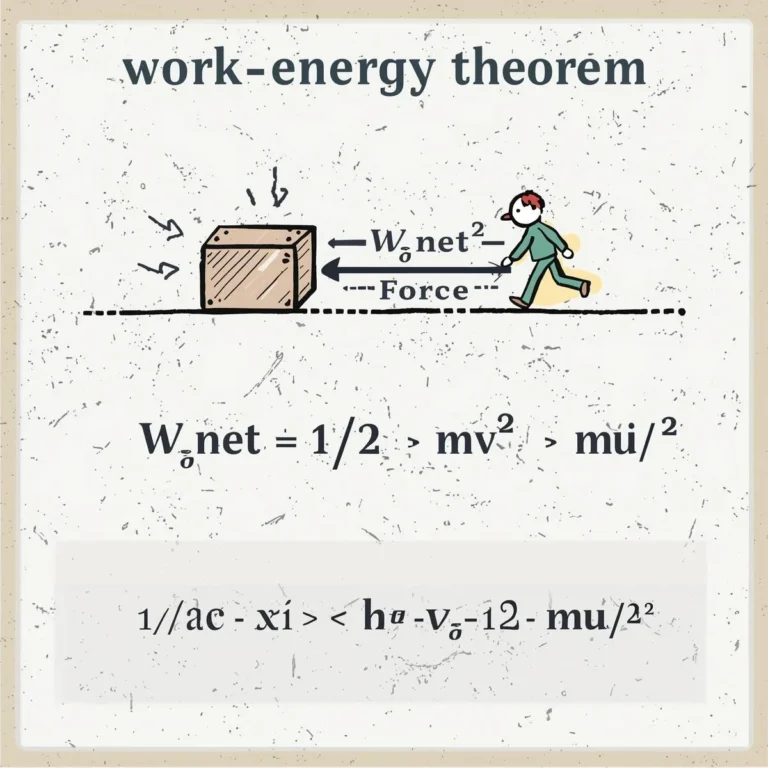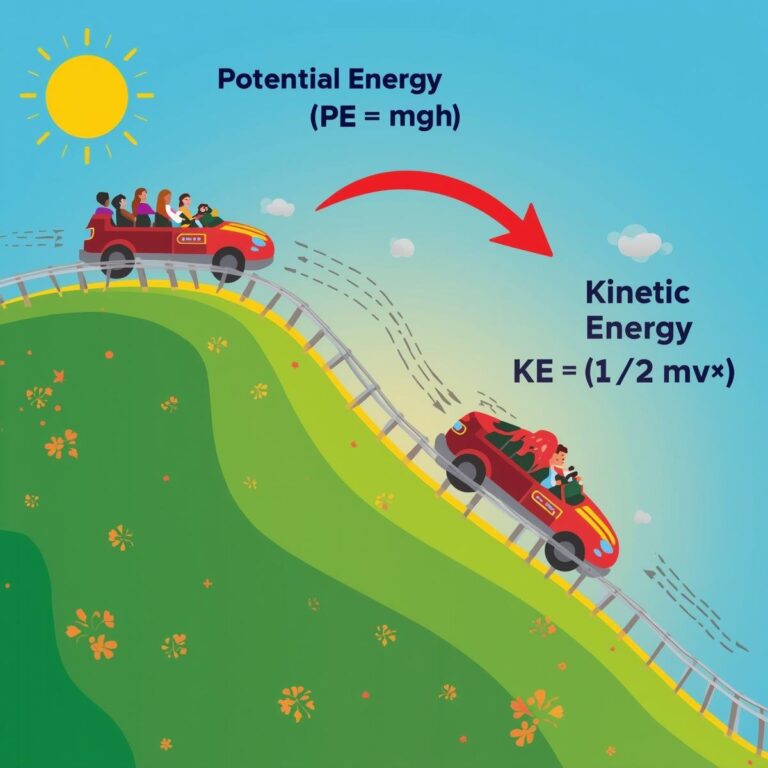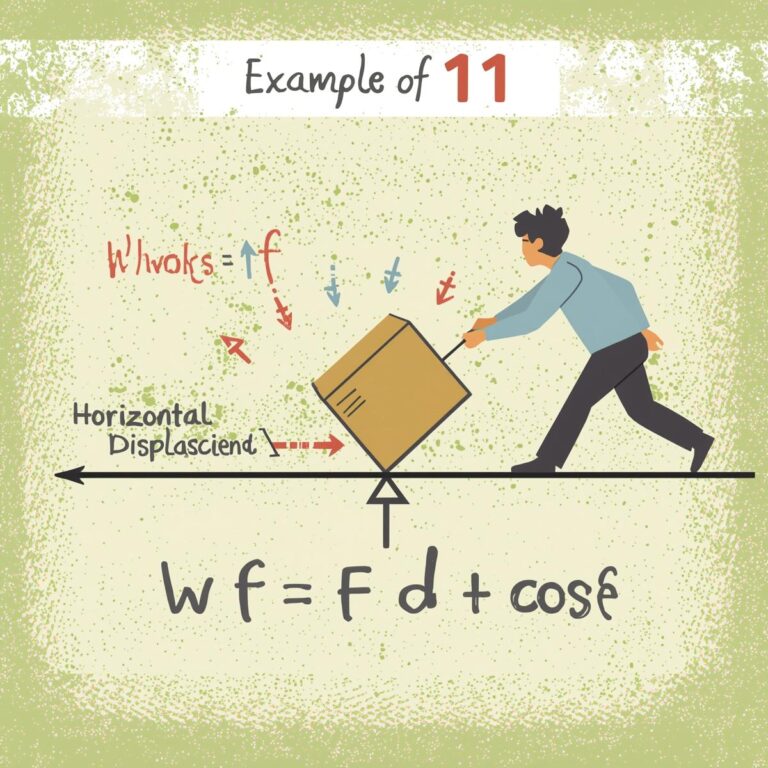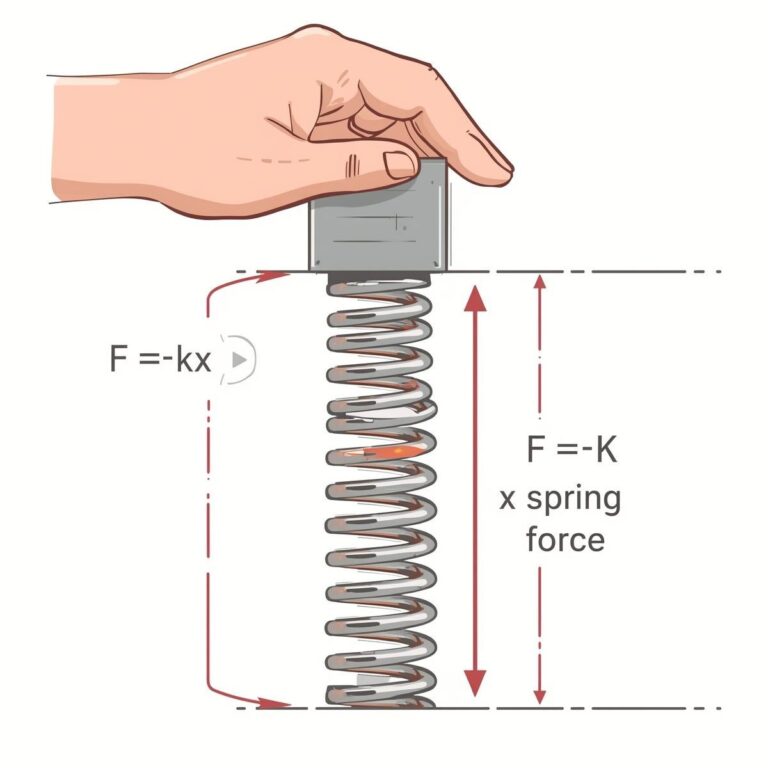1. Newton’s First Law of Motion (Law of Inertia)
Definition:
An object remains at rest or in uniform motion in a straight line unless acted upon by an external force.
Formula:
No specific formula, but conceptually:
If F = 0, then v = constant.
Example:
A book lying on a table remains at rest until someone pushes it.
2. Newton’s Second Law of Motion
Definition:
The rate of change of momentum of an object is directly proportional to the applied force and takes place in the direction of the force.
Formula:
F = m × a
Where:
- F = Force (N)
- m = Mass (kg)
- a = Acceleration (m/s²)
Example:
Pushing a trolley: The harder the push (force), the greater the acceleration.
3. Newton’s Third Law of Motion
Definition:
For every action, there is an equal and opposite reaction.
Formula:
F₁ = -F₂
Example:
When jumping off a boat, the boat moves backward as the person moves forward.
Illustrative Image
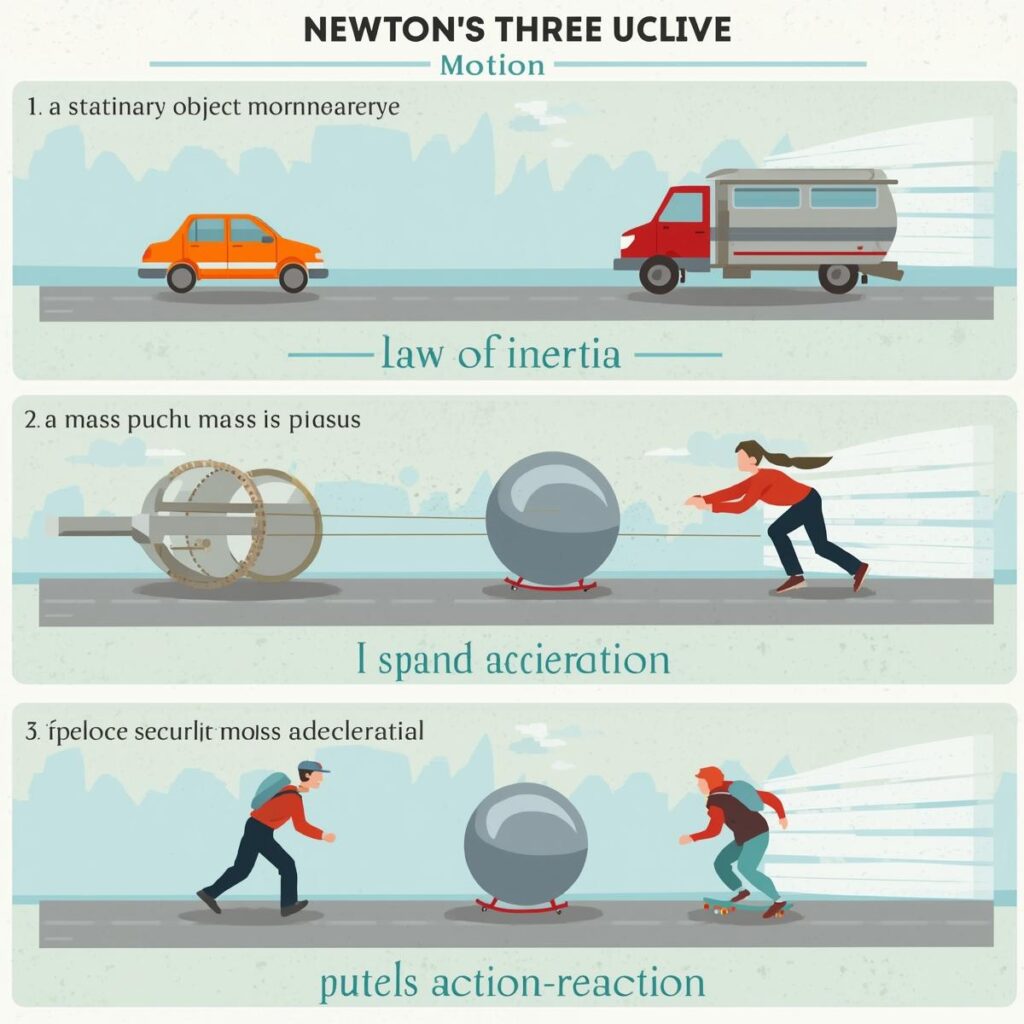
Summary Table
| Law | Definition | Formula | Example |
|---|---|---|---|
| First | Object remains at rest or uniform motion unless acted by force | No specific formula | Book on table |
| Second | Force = mass × acceleration | F = m × a | Pushing a trolley |
| Third | Every action has equal and opposite reaction | F₁ = -F₂ | Jumping off a boat |
